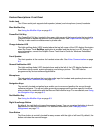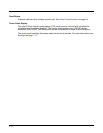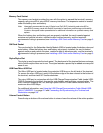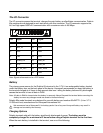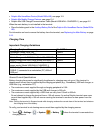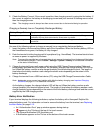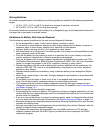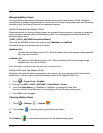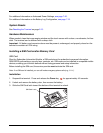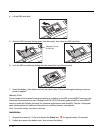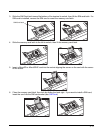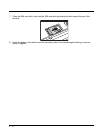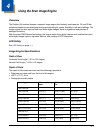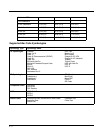
3 - 13
Storing Batteries
To maintain top performance from batteries, avoid storing batteries outside of the following temperature
ranges:
• 14°F to 113°F (-10°C to +45°C) for short term storage of less than one month
• 32°F to 86°F (-0°C to +30°C) for long term storage
Do not store batteries in extremely high humidity. For prolonged storage, do not keep batteries stored in
a charger that is connected to a power source.
Guidelines for Battery Pack Use and Disposal
The following are general guidelines for the safe use and disposal of batteries:
• Do not disassemble or open, crush, bend or deform, puncture or shred.
• Do not modify or remanufacture, attempt to insert foreign objects into the battery, immerse or
expose to water or other liquids, expose to fire, explosion or other hazard.
• Improper battery use may result in a fire, explosion or other hazard.
• We recommend use of Honeywell Li-ion battery packs. Use of any non-Honeywell battery may
pose a personal hazard to the user.
• Only use the battery for the system for which it is specified. Do not use a battery in any other
manner outside its intended use in Dolphin terminals and peripherals.
• Only use the battery with a charging system that has been qualified with the system per CTIA
Certification Requirements for Battery System Compliance to IEEE 1725. Use of an unqualified
battery or charger may present a risk of fire, explosion, leakage, or other hazard.
• Replace the battery only with another battery that has been qualified with the system per this
standard, IEEE-Std-1725. Use of an unqualified battery may present a risk of fire, explosion,
leakage or other hazard.
• Replace defective batteries immediately; using a defective battery could damage the Dolphin
terminal.
• Never throw a used battery in the trash. Promptly dispose of used batteries in accordance with
local regulations.
• Do not short-circuit a battery or throw it into a fire; it can explode and cause severe personal
injury. Do not allow metallic conductive objects to contact battery terminals.
• If you observe that the Honeywell battery supplied is physically damaged, please send it to
Honeywell International Inc. or an authorized service center for inspection, see Product Service
and Repair on page 14-1.
• Battery usage by children should be supervised.
• Avoid dropping the terminal or battery. If the terminal or battery is dropped, especially on a hard
surface, and the user suspects damage, send it to a Honeywell International Inc. or an authorized
service center for inspection.
• If you are not sure the battery or charger is working properly, send it to Honeywell International
Inc. or an authorized service center for inspection, see Product Service and Repair on page 14-1.
• Excessive discharge can degrade battery performance. Recharge the battery when your terminal
indicates low battery power.
• Although your battery can be recharged many times, the battery life is limited. Replace it after the
battery is unable to hold an adequate charge.
• The Dolphin 60s should only be connected via its microUSB connector to CTIA certified
adapters, products that bear the USB-IF logo or products that have completed, the USB-IF
compliance program.



